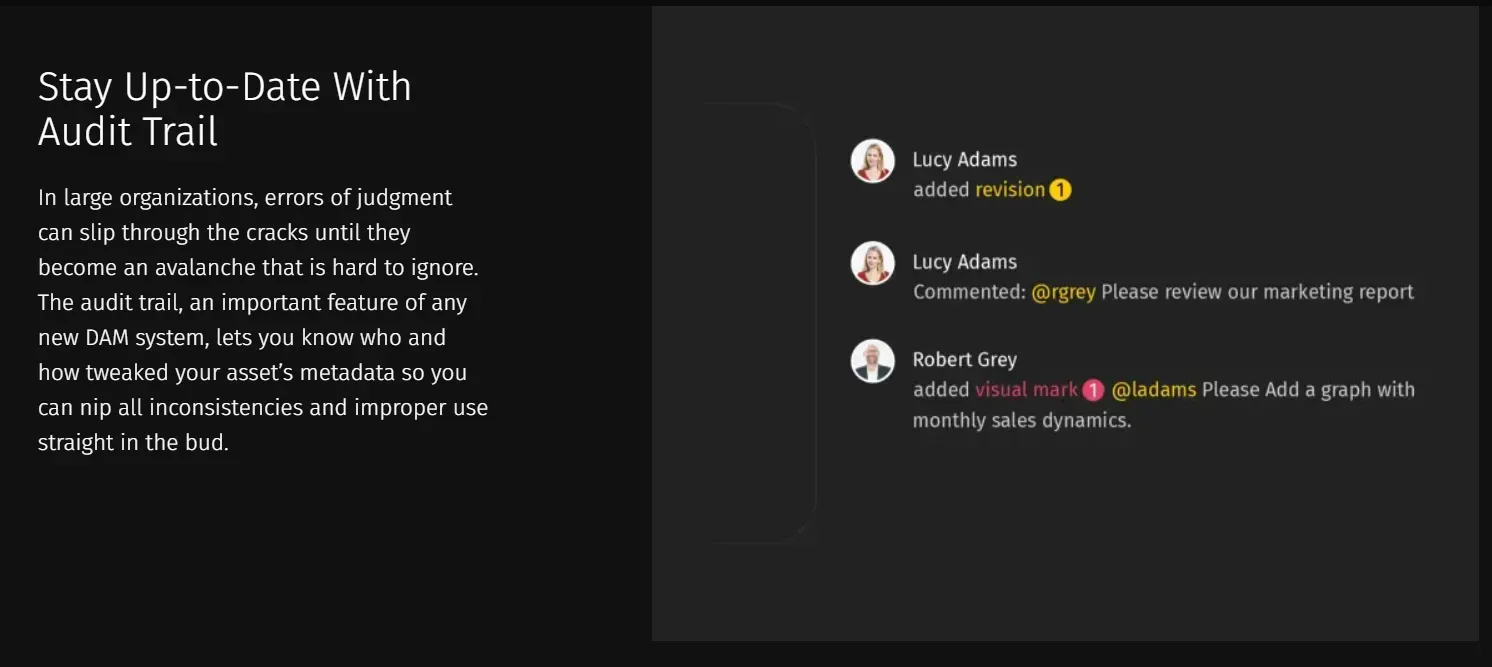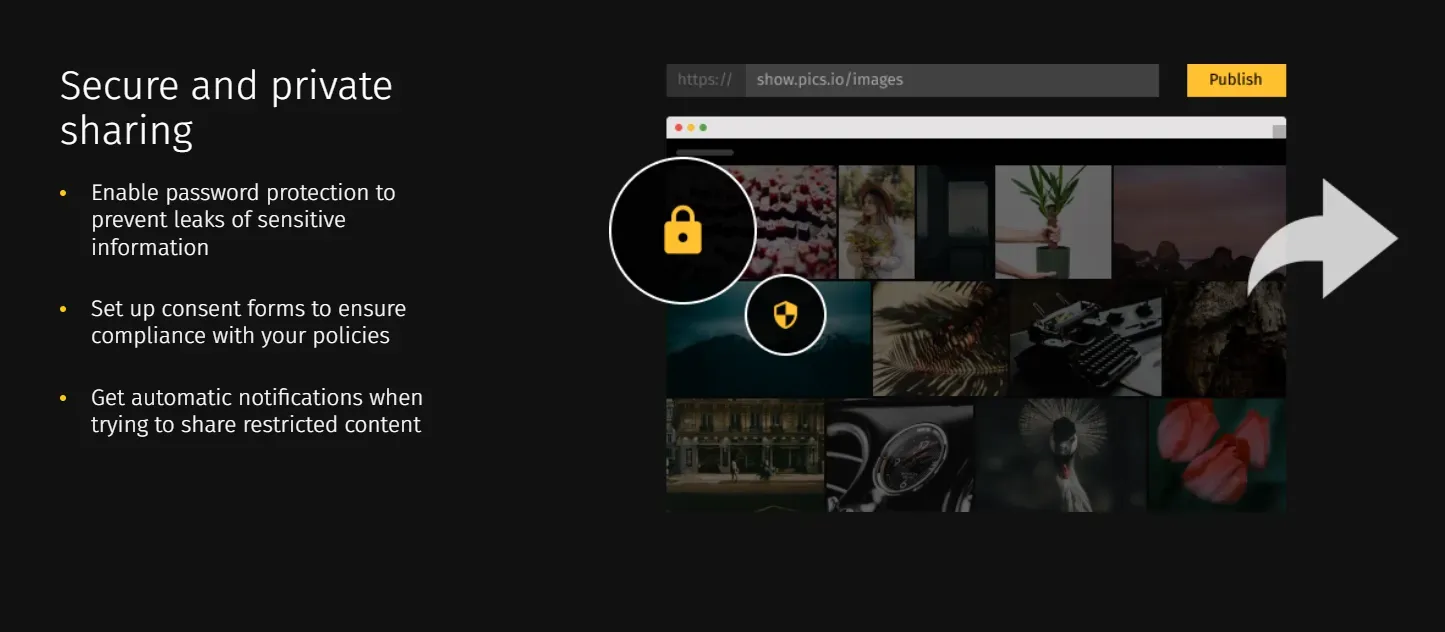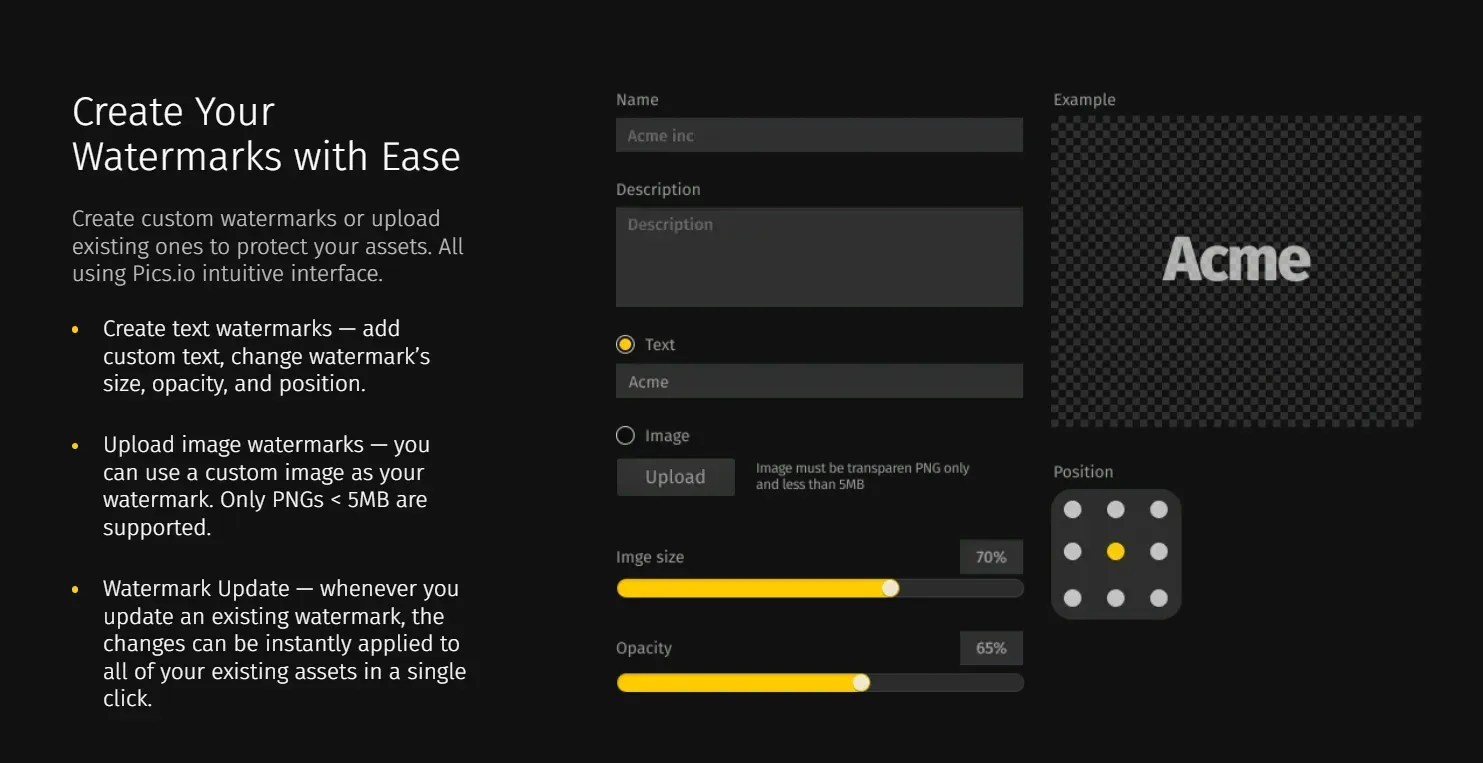In this article, you’ll learn:
Digital Asset Management (DAM) software is a powerful tool for organizing, storing, and managing images, videos, and documents. In addition to its primary functions, it can also help businesses with compliance and security.
In this article, we will talk in detail about how DAM systems improve security and compliance for companies and organizations.
The Challenges of Compliance and Security in Digital Asset Management
Compliance and security are essential components of any successful business. Compliance protocols ensure that a company adheres to legal and regulatory requirements and protects it from legal and financial consequences.
Security, in its turn, means that a business's digital assets are protected from unauthorized access, theft, and misuse, safeguarding the company's reputation and revenue. A lack of compliance and security measures can result in costly legal penalties, data breaches, and even loss of customer trust.
Businesses face several challenges when it comes to compliance and security in their DAMs. One of the major challenges is the constantly evolving regulatory landscape. Companies must comply with various regulatory frameworks, such as GDPR (General Data Protection Regulation) and HIPAA (Health Insurance Portability and Accountability Act) among others.
These frameworks impose strict requirements on how digital assets should be handled, stored, and managed, including how hardware containing digital information should be secured using physical security technologies. Therefore, non-compliance can lead to severe penalties and harm the company's reputation.
Another challenge is the security risks associated with DAM. Assets, such as images, videos, and documents, are valuable targets for cybercriminals seeking to steal sensitive information or disrupt business operations.
Data breaches, unauthorized access, and malware attacks are some of the common cybersecurity risks here. Additionally, the increasing use of cloud-based DAMs and web-based DAMs plus remote working arrangements can expose digital assets to new security risks.

To address these challenges, companies must implement robust security and compliance measures. DAM software can help organizations to achieve this by providing centralized management, different access levels, digital watermarking, encryption, and other security features. What’s more, regular security audits, employee training, and adherence to industry standards and best practices can help to mitigate the risks we’ve mentioned before.
How DAM Software Can Help with Compliance and Security
Apart from convenient storage and management options, DAM solutions offer a range of features that can help businesses ensure compliance and security. Among them:
- Centralized management: DAM software allows companies to manage all their assets in a centralized location, making it easier to control access and comply with regulatory frameworks.EMR development company can enhance healthcare compliance by creating systems that securely manage sensitive medical records, aligning with regulatory standards such as HIPAA.
- Access controls: With role-based access controls within a DAM system, businesses can restrict access to sensitive assets to authorized personnel only.
- Audit trails: With these, companies can track the usage of digital assets - who accessed a file, when it was accessed, and what changes were made.

- Metadata tagging: Businesses can tag assets with metadata, making it easier to search, retrieve, and manage digital assets, and ensuring compliance with regulations related to data retention and privacy.
- Encryption: This feature protects assets from unauthorized access or theft.
- Digital watermarking: Digital watermarks on assets help to track and identify them, and deter unauthorized usage.
- Secure file sharing: Such features enable companies to collaborate with internal and external stakeholders while maintaining control over digital assets.

Depending on the DAM solution of your choice, all these features or only some of them will be available to your organization. Thus, with DAM tools, you can not only optimize your practices but also benefit from in-built functionality for security and compliance.
Real-World Examples of DAM Software in Compliance and Security
The DAM system has become a critical tool for businesses across various industries, helping them improve compliance and security.
For instance, companies in the healthcare industry use DAMs to ensure compliance with patient data privacy regulations by securely managing and distributing digital assets, such as medical records and images (X-rays, CT scans, and MRIs, etc.), as well as Electronic Medical Records (EMR) and even research data and findings.Their effectiveness is enhanced when paired with specialized medical software development that prioritizes patient confidentiality and data integrity.
All healthcare institutions must comply with HIPAA. To put it simply, HIPAA requires that Patient Health Information (PHI) is safeguarded. PHI is anything relating to past, present, or future healthcare, such as patients’ conditions, services they receive, and even how those services were paid for.
Let’s have a closer look at how a DAM system actually helps to comply with regulations and secure digital assets in the healthcare industry.
- Data Encryption: This feature allows access to assets only for authorized personnel (like doctors and nurses).
- Access Controls: Access to sensitive data is limited to authorized personnel only. Additionally, DAM administrators can assign different levels of access to different employees based on their roles.

- Audit Trails: This creates a record of all user activities, including data access, modifications, and deletions. Such an audit trail can be used to track suspicious activity and to identify and respond to security breaches.
- Disaster Recovery: All data in DAM software is backed up regularly and can be restored quickly in case of a disaster. It means that healthcare organizations can continue to provide critical services even during data losses.
When it comes to the financial sector, DAMs are used to manage and track financial documents and files, ensuring compliance with financial regulations and industry standards. At the same time, it enables secure collaboration and digital asset sharing among different stakeholders while maintaining security and preventing unauthorized access.
The following DAM features help companies in the financial industry improve their compliance and security:
- Compliance with regulations: DAM software helps financial organizations comply with regulations such as Payment Card Industry Data Security Standard(PCI DSS). It ensures that sensitive financial data, in this case its cardholders’ private information, is protected and only authorized personnel can access or use it.
- Data Encryption: Banks and financial institutions are required to gather and save sensitive information from their clients. This feature protects all the documents, invoices, card information, etc., stored in a DAM system.

- Access Controls: Different bank employees have different access levels to clients’ information within a DAM. For instance, invoices or transaction history documents might be available only to employees of certain departments.
- Audit Trails: It’s possible to check who accessed, uploaded, deleted, or modified assets in a DAM solution. This feature is especially useful in banking to see if the documents provided by clients haven’t been changed or leaked.
- Disaster Recovery: Due to this feature, banks and financial institutions can recover all their assets saved in a DAM system in case of a cyber attack or data loss, for example.
DAM software is instrumental in improving compliance and security across various industries by establishing secure management, distribution, and tracking of digital assets. Its use has helped companies to maintain regulatory compliance, prevent data breaches, and protect their reputation.
Choosing the Right DAM Software for Compliance and Security
If you want to know how to choose a Digital Asset Management system for your organization’s compliance and security needs, here’s the list of some crucial evaluation criteria:
- Compliance Certifications: Make sure that a DAM system has compliance certifications such as HIPAA, PCI DSS, or any other one (depending on the industry your company operates in).
- Security features: look for access controls, digital watermarking, audit trails, disaster recovery or any other security feature your business might potentially benefit from - this functionality will vary with each DAM. When selecting a Digital Asset Management system, consider opting for one that integrates antivirus with VPN capabilities to bolster your organization's cybersecurity defenses.

- Integration: Consider how well a DAM integrates with existing systems and workflows.
By evaluating all these factors, businesses can choose a solution that fully meets their compliance and security needs.
Conclusion
In today's digital age, compliance and security are critical considerations for any organization managing sensitive digital assets. And DAM software is here to help. A DAM solution by Pics.io offers such features as access controls, digital watermarking, and audit trails for monitoring user activities, it can help your businesses to take security to a whole different level.
Investing in a DAM solution for compliance and security purposes not only protects an organization's sensitive data but also preserves the integrity of critical systems and operations. With a reliable DAM system, businesses can minimize the risk of data breaches, improve compliance, and enhance their ability to recover quickly from data losses.
Did you enjoy this article? Give Pics.io a try — or book a demo with us, and we'll be happy to answer any of your questions.




